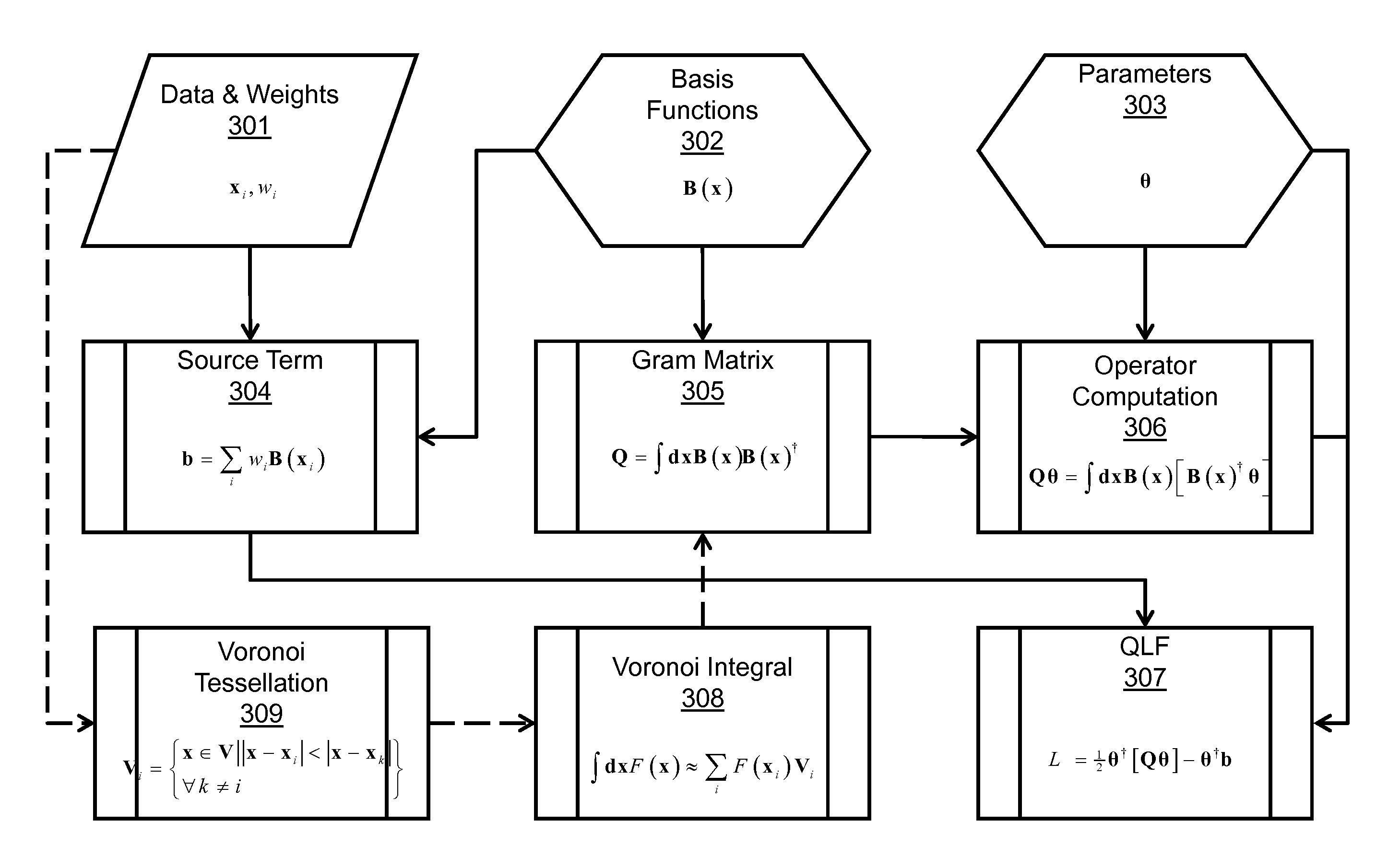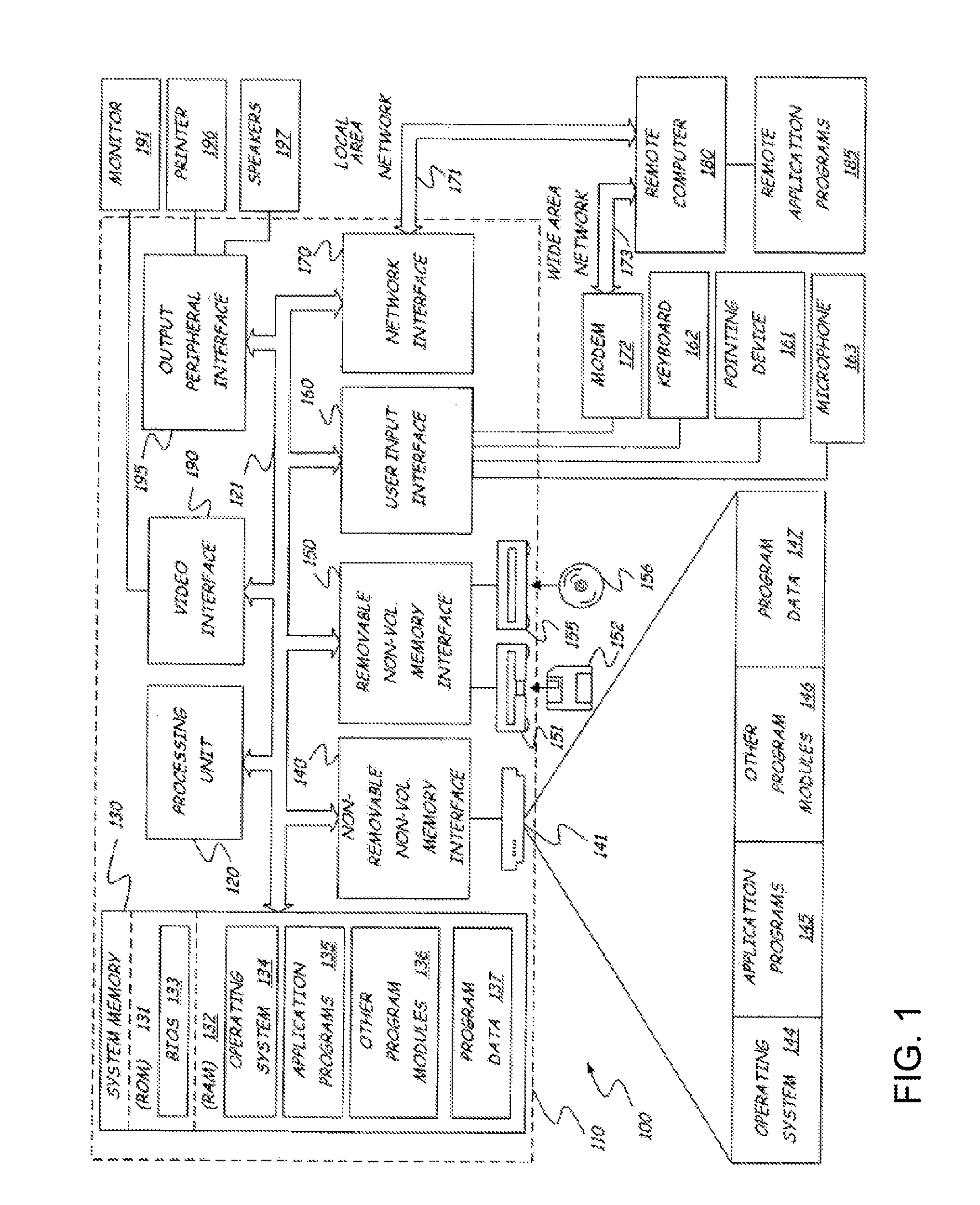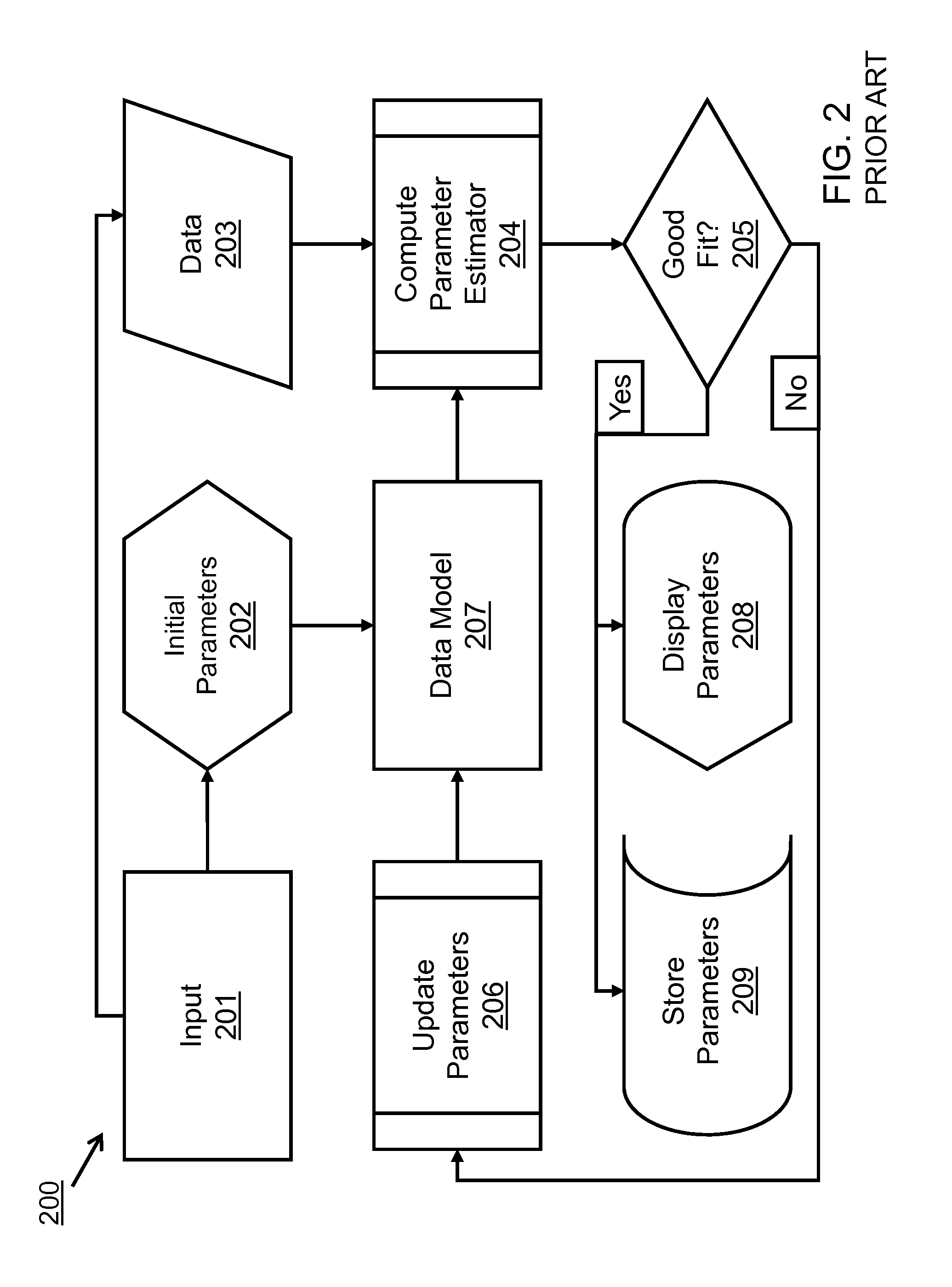Method and system for statistical modeling of data using a quadratic likelihood functional
a statistical modeling and quadratic likelihood technology, applied in the field of statistical estimation for prediction of data, can solve the problems of limiting the usefulness of ml, limiting the accuracy of qlf, and limiting the use of ml, so as to improve the accuracy and computational efficiency of qlf, reduce the sensitivity to low-probability events, and improve the effect of statistical modeling efficiency
- Summary
- Abstract
- Description
- Claims
- Application Information
AI Technical Summary
Benefits of technology
Problems solved by technology
Method used
Image
Examples
example i
Sparse Signal Detection
[0158]Even a strong signal may be difficult to detect if sampled too sparsely. For example, a military signal may be observed from a large distance, with only a small number of photons being detected. FIG. 6 provides a simulation of a source emitting a strong periodic signal, plus some white noise, above a nonzero constant background. FIG. 7 displays the power spectrum (Press et al 2007) of the signal in FIG. 7, showing the relative intensities of the different frequencies (zero frequency omitted).
[0159]Because the detector is “very far from the source”, a relatively small number of photons, e.g., 200 photons, are detected. A histogram of the arrival times of the photons in FIG. 8 shows some high-frequency behavior, but no periodicity is detected in the power spectrum of the histogram in FIG. 9. QLF estimation, on the other hand, clearly detects the periodic signal in the power spectrum at the correct frequency, as seen in FIG. 10.
example ii
[0160]Digital mammography uses essentially the same X-ray mammography system as conventional mammography, but the system is equipped with a digital receptor and a computer instead of a film cassette. In standard mammography, images are recorded on film using an x-ray cassette, and the film is viewed by the radiologist using a light box and then stored in a jacket in the facility's archives. With digital mammography, the breast image is captured using a special electronic X-ray detector, which converts the image into a digital picture for review on a computer monitor and storage on a digital archival system. With digital mammography, the magnification, orientation, brightness, and contrast of the image may be altered to help the radiologist see certain areas more clearly.
[0161]Digital full-field mammography allows screening for and diagnosing breast cancer and may eventually replace traditional mammography. Digital spot-view mammography allows faster and more accur...
example iii
[0167]Angiography is a medical imaging technique used to visualize the inside of blood vessels and organs of the body, with particular interest in the arteries, veins and the heart chambers. This is traditionally done by injecting a radio-opaque contrast agent into the blood vessel and imaging using X-ray detectors. Depending on the type of angiogram, access to the blood vessels is gained most commonly through the femoral artery, to look at the left side of the heart and at the arterial system; or the jugular or femoral vein, to look at the right side of the heart and at the venous system. Using a system of guide wires and catheters, a type of contrast agent (which shows up by absorbing the X-rays), is added to the blood to make it visible on the x-ray images. Angiographic systems in use today generally provide images from two different views to allow for better 3D positioning, as in sterotactic biopsies.
[0168]The X-ray images taken may either be still images or motion im...
PUM
 Login to View More
Login to View More Abstract
Description
Claims
Application Information
 Login to View More
Login to View More - R&D
- Intellectual Property
- Life Sciences
- Materials
- Tech Scout
- Unparalleled Data Quality
- Higher Quality Content
- 60% Fewer Hallucinations
Browse by: Latest US Patents, China's latest patents, Technical Efficacy Thesaurus, Application Domain, Technology Topic, Popular Technical Reports.
© 2025 PatSnap. All rights reserved.Legal|Privacy policy|Modern Slavery Act Transparency Statement|Sitemap|About US| Contact US: help@patsnap.com



